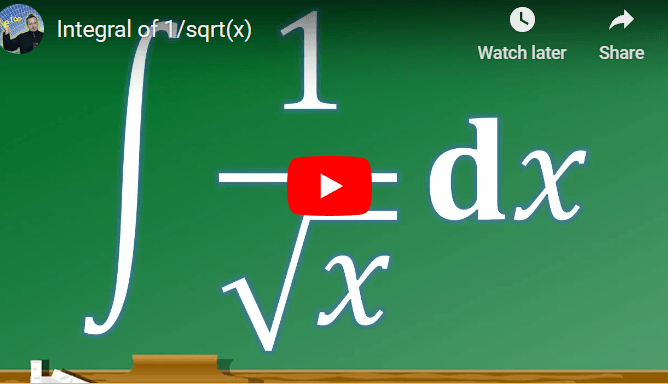Integral of 1/√x: A Detailed Step-by-Step Guide
Given Integral: ∫(1/√x) dx
Step 1: Rewrite the Integral
∫(1/√x) dx = ∫x-1/2 dx (Rewriting 1/√x as x-1/2)
Step 2: Apply the Power Rule for Integration
The power rule for integration states that ∫xn dx = (xn+1)/(n+1) + C, where n ≠ -1.
Step 3: Substitute n = -1/2 into the Power Rule
∫x-1/2 dx = (x-1/2 + 1)/(-1/2 + 1) + C (Substituting n = -1/2 into the power rule)
Step 4: Simplify the Exponent
(x-1/2 + 1)/(-1/2 + 1) = (x1/2)/(1/2) + C (Simplifying the exponent -1/2 + 1 = 1/2)
Step 5: Simplify the Fraction
(x1/2)/(1/2) = 2x1/2 + C (Dividing by 1/2 is the same as multiplying by 2)
Step 6: Rewrite in Radical Form
2x1/2 + C = 2√x + C (Rewriting x1/2 as √x)
Conclusion: Final Result
The integral of 1/√x with respect to x is 2√x + C. This example demonstrates the application of the power rule for integration, simplification of exponents and fractions, and conversion between radical and exponential forms.

The image displays two curves on a coordinate plane. The first curve represents the function y = 1/√x, which is a decreasing curve that approaches the x-axis as x increases. It starts from the top left of the graph and gradually approaches the x-axis but never touches it.
The second curve represents the integral of the first function, y = 2√x, which is an increasing curve that starts from the origin (0,0) and rises to the right. It forms a smooth, upward-opening parabolic shape.
The graph illustrates the relationship between the original function and its integral, showing how the integral of a decreasing function can be an increasing function. Both curves are plotted for x values ranging from 0.1 to 10. The x and y axes are clearly labeled, and legends are provided to identify each curve.


